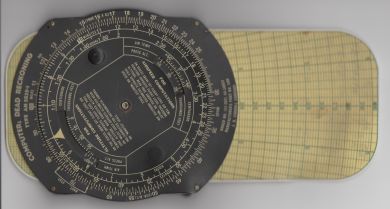|
One of the fun things about pilot training is learning to do things the old way. I've just learned the art of plotting courses using an E6B, a glorified slide rule. Initially I mocked this old tech, but having learnt it I admire how simple and unmediated it is. And I can do all my calculations on a 65 year old whiz-wheel, my father's Army Air Force issue Computer: Dead Reckoning.
 The other side of the E6B is a simple circular slide rule for doing multiplication and division. It has scales for fuel consumption, distance and rate calculations, converting °F to °C, etc. Initially I used my iPhone for this arithmetic but I kind of prefer rotating the wheels and reading the numbers off the scale. The imprecision of a slide rule reinforces that everything is just an estimate. And I'm constantly sanity checking everything to make sure I'm didn't misread a scale by a factor of 10. That extra work seems to help reinforce the course planning. I'm pretty sure as soon as I pass my pilot exam I'll never use an E6B again. It's much easier to use map-based flight planning software, or for that matter just to jump in the plane and let the GPS computer figure it out for you. More accurate, too. But the old way's kind of cool. |
||
